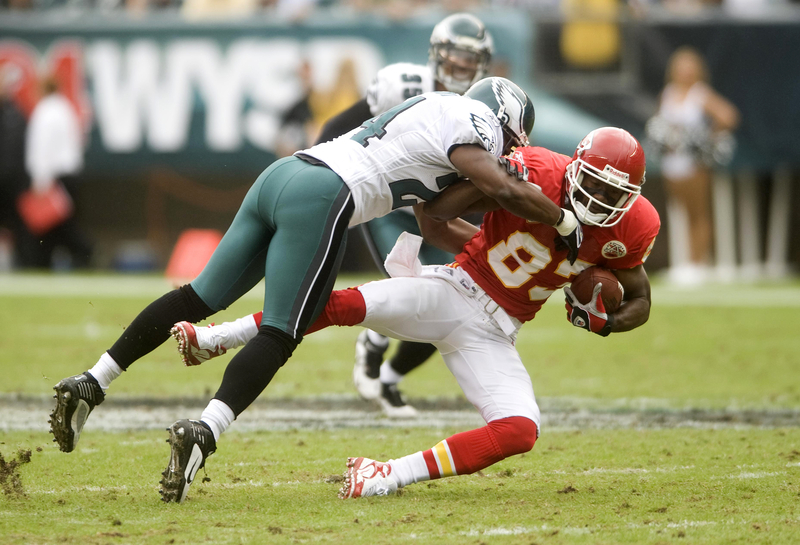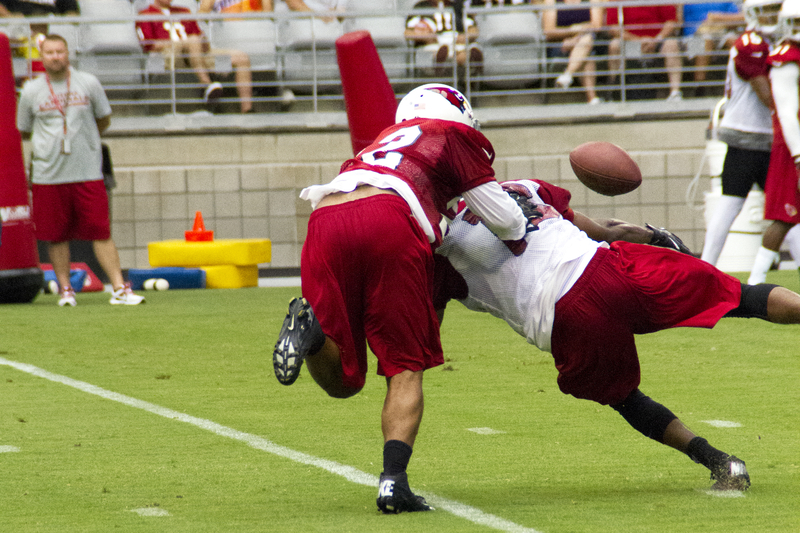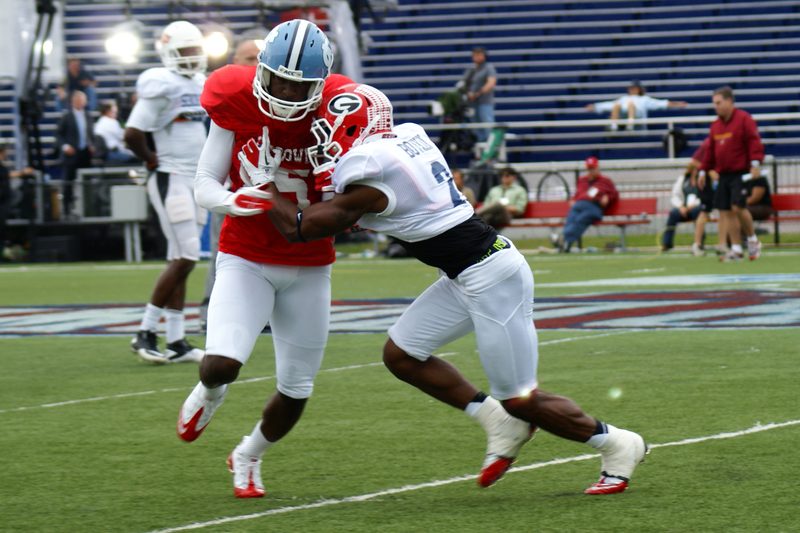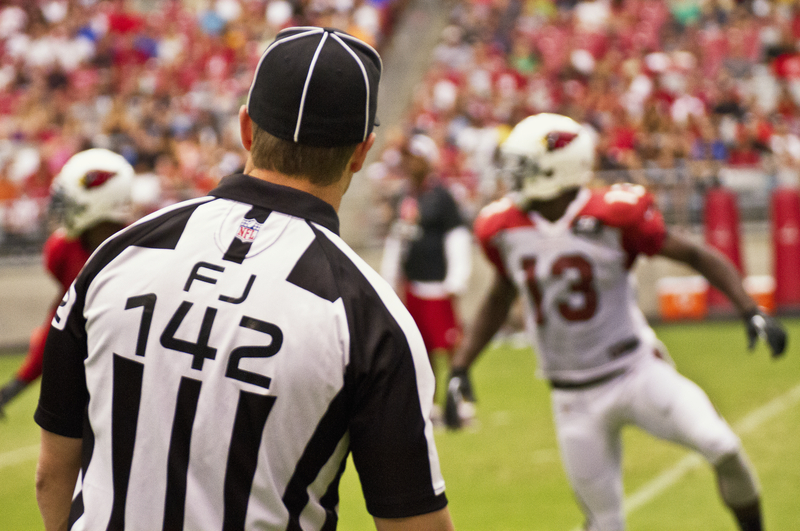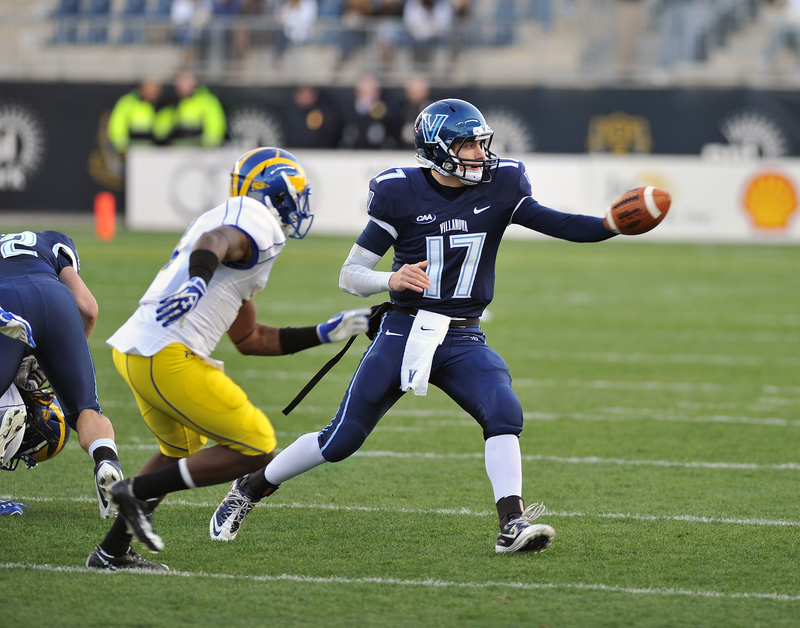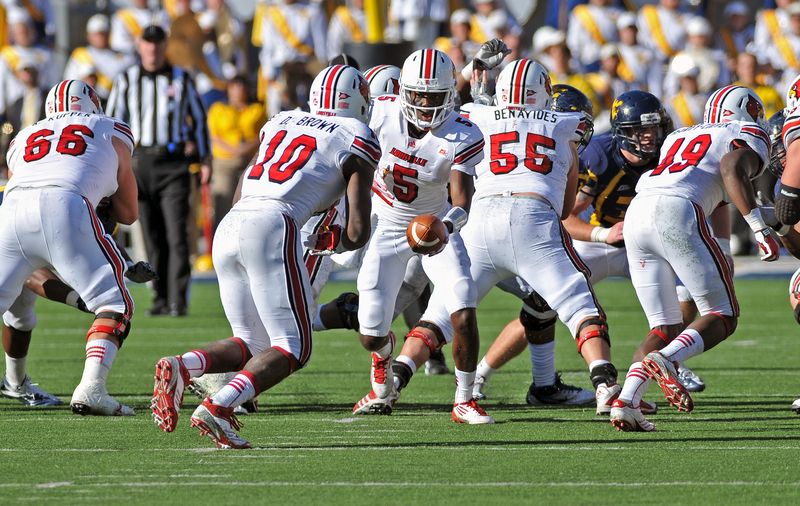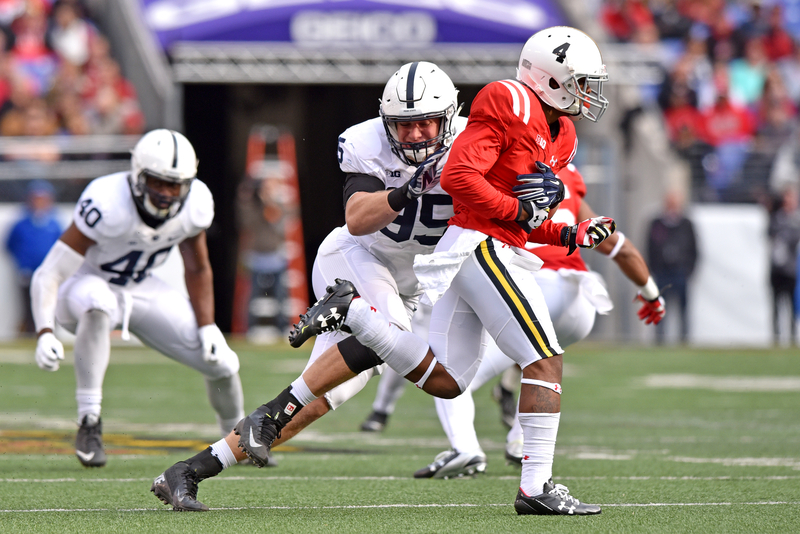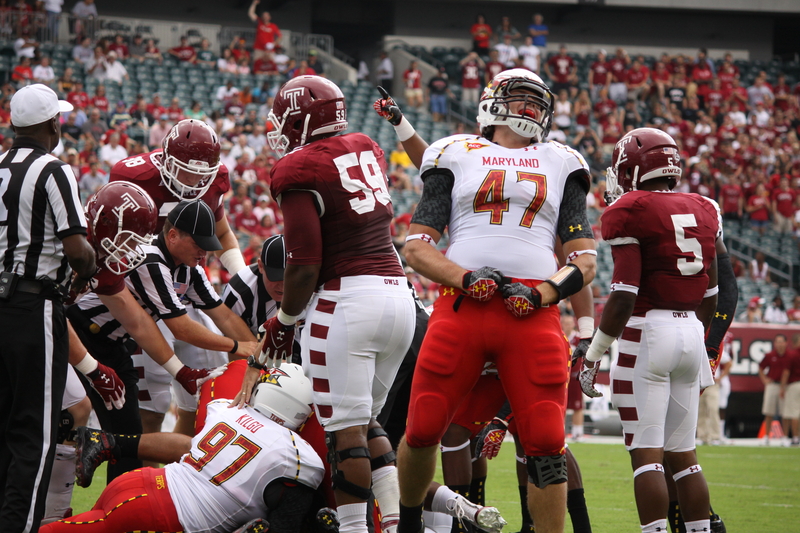Last updated on September 26th, 2022 at 08:12 pm
Targeting is when a player lowers their head and makes helmet-to-helmet contact with another player or contact with the neck area during a football game. Targeting can occur anytime, whether between a defensive player and the ball carrier or two players during a kickoff. This rule exists in both the NFL and college football as an attempt to increase player safety, but the jury remains if these calls are suitable for the game overall or not.
So, what is the rule for targeting in the NFL? What is the rule for targeting in college football? What is the punishment for targeting in the NFL? Finally, what is the punishment for targeting in college football, and can a player appeal it?
Below we’ll dive into the targeting rule and how it applies to both the NFL and college football.
What is the Rule for Targeting in the NFL?
The NFL does not have a targeting rule; instead, they have more of a use of helmet call, their version of targeting. Per the rulebook, the NFL states this call is when players lower their heads and use their helmets to contact the players they are tackling.
What is the Rule for Targeting in College Football?
The NFL crafted its targeting rules after the college football targeting call, but the NCAA rule book is more expansive as to what targeting is. The NCAA states that targeting occurs when a player goes after their opponent with forcible contact. This rule means that players in college football can’t make violent contact with the crown of the helmet or contact a defenseless player’s head or neck area.
Its also targeting if a player hits another player in the neck area with their shoulder, hands, forearms, fist, or elbow. Ole Miss, in their week one game of the 2021 season, had four players charged and removed from the game for targeting fouls of varying degrees.
What is the Punishment for Targeting in the NFL?
There is a 15-yard penalty to the team who commits the targeting penalty. In addition, the player who committed the targeting could be disqualified from the game if the ref deemed the contact to be flagrant and excessive.
What is the Punishment for Targeting in College Football?
Targeting in college football is a little different regarding the consequences. If a player gets called for targeting, their team gets a 15-yard penalty, and if the foul occurred in the first half of the game, they get ejected for the rest of the game. However, if the foul occurred in the second half, they will be removed for the rest of the half and suspended for the first half of the next game.
Before the 2022 season, if a player got a targeting foul in the second half, they got a first half suspension for the next game. But, the rules committee made a rule change to where if the foul occurred in the second half of the game, the players would still get ejected, but replay officials will check the call later, and if they found the refs called the foul incorrectly, the player could be allowed to play the next game.
If a player commits three targeting fouls in a season, they not only are ejected from the current game, but they will get a full one-game suspension.
Does the Targeting Rule Have Controversy?
Some take issue with the call regarding the difference between players who intentionally lean in to make contact using their helmets and players who, because of the game’s intensity, make contact. Clemson had that controversy in one of their college football playoff game against Ohio State when one of their better defensive players got a targeting call that was up for interpretation. That call lead to an ejection for that player, which became a big momentum shift against Clemson.
Can a Player Appeal Targeting?
If a player in college football commits a targeting foul in the second half of the game, they will be ejected for the rest of the game. However, a team may appeal the call to prevent the first-half suspension if they felt the call was incorrect.
During the game, a targeting foul is automatically up for review in both the NFL and college football. In NCAA football, during a review for targeting, refs can not declare the call on the field “stands “; they must either confirm the call or overturn it.
In the NFL, the review is in place to determine if the player is subject to an ejection based on the severity and intentionality.
Is the Targeting Penalty Helpful in Reducing Injuries?
With the risk of losing yards and ejections/suspensions from targeting hits, there has been a trend in college football where these hits decrease during games. According to SI.com, targeting fouls have reduced from .23 per game in 2017 to .20 in 2021.
In addition, Journals.sagepub.com reviewed helmet-to-helmet hits in High School football and saw a decreased trend in these types of hits after these rules took place.
Conclusion: What is Targeting in Football?
In summary, a targeting penalty is a way to punish violent hits to players that can result in injuries. If committed in the NFL, it carries a fifteen-yard penalty with the possibility of ejection. In college football, the team gets a fifteen-yard penalty, and the guilty player gets ejected for the rest of the game. Or if the foul occurred in the second half, they are suspended for that half and the first half of the next game. But, with the recent rule change, first-half suspensions are reviewable.
Targeting calls, since their inception, has been the topic of much controversy throughout the year. Before the rule, many football players would train to lead with helmets. However, with these new rules, players have to adapt. But the dispute also arises when a slight nudge forward of the head could be a targeting call.
However, from SI and other publications, there is data showing that helmet-to-helmet hits are decreasing in the game. Studies show that the penalty for these types of collisions deters players from targeting others. By reducing helmet-to-helmet hits with penalties, the game is safer for everyone.
Similar Posts:
What is a Coin Toss in Football?
What are Bowl Games in College Football?
How Does Overtime Work in College Football?
Unnecessary Roughness in Football
2 Point Conversion in Football
Who Invented American Football?
How Much Do College Football Coaches Make?
Offensive Coordinator Football
What is the Heisman Trophy in College Football?
What Does the SEC Mean in College Football?
What is a Hail Mary in Football?
What is the Pro Bowl in Football?
What is a Wide Receiver in Football?
What is the Red Zone in Football?
How Many Players are on a Football Team?
What is a Pick Six in Football?
What is a Long Snapper in Football?
Greg Kristan, owner of The Stadium Reviews, LLC and TM Blast, LLC, brings his extensive experience visiting over half of the MLB ballparks, along with numerous MLS, NHL, NBA, and NFL venues, to provide in-depth coverage on the bag policy, food options, and parking. He has also been interviewed about his experiences on several sports podcasts.

